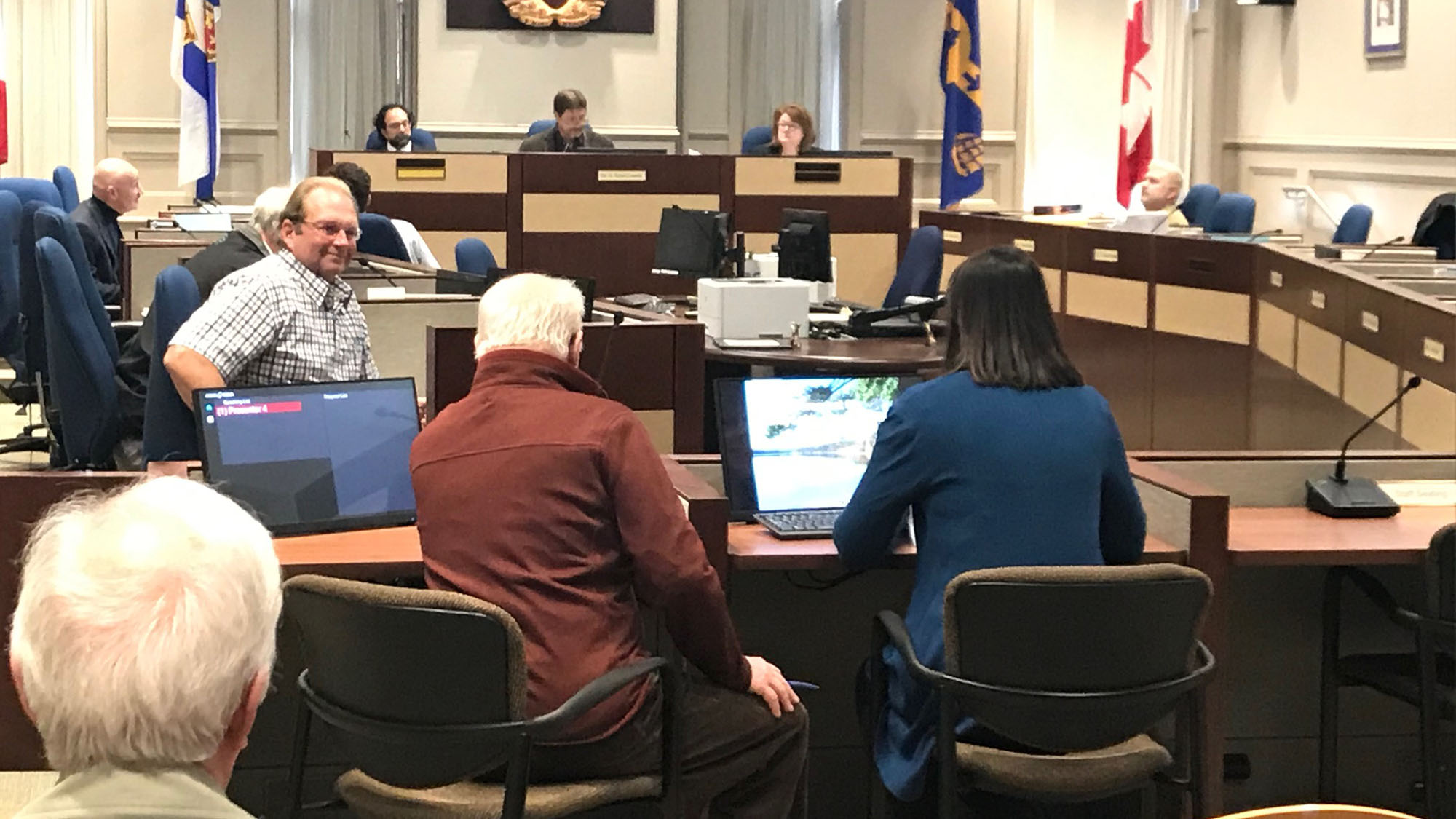More protected land needed near Sandy Lake, group says
The area boasts diverse species and 200-year-old trees

caption
Karen Robinson and David Patriquin present to the environment and sustainability committee in Halifax.An environmental coalition is asking the Halifax Regional Municipality to help it add 1,000 acres of land in Sandy Lake to a protected regional park.
David Patriquin, with the Sandy Lake-Sackville River Regional Park Coalition, said the land connecting the Chebucto Peninsula to the central and eastern mainland needs to be protected. It supports all kinds of aquatic species, includes mature forests, and contains four sub-watersheds.
Patriquin, a retired biology professor from Dalhousie University, was one of the presenters for the coalition at Thursday’s environment and sustainability committee meeting.
The land in question has 22 different owners. Clayton Developments owns 600 acres, while the rest is owned by 21 other landholders.
“There is absolutely no way that that lake is going to survive a settlement of as many 15,000 people in that area,” said Patriquin.
The coalition is asking the city to trade other land of equal value with Clayton Developments, the largest land owner.
The land plays an integral role as the largest sub-watersheds along the Sackville River, said Karen Robinson, coalition co-chair.
She told the committee that Clayton Developments has expressed in writing that they are willing to trade their 600 acres surrounding Sandy Lake for other lands of equal value. Some of the other property owners are also open to the idea of selling, she said.
During her opening statement, Robinson said they were pleased to hear that Halifax’s director of planning, Kelly Denty, had sent a letter to the developer informing them that Halifax did not see the need to develop housing in the Sandy Lake area for at least another 15 years. But she still stressed the importance and urgency of the matter.
“That means now to us, because in five years they will have invested another five years’ worth of their own money and effort and they will be less likely to trade. In fact, trade could stop. So, we want the city to take that seriously now,” said Robinson in an interview after the presentation.
Patriquin said that when land gets developed, the hard surfaces created can increase the risk of flooding in the area.
“When the water comes in it just roars off instead of being absorbed in the ground. That could have a big impact downstream in Bedford,” he said following the presentation.
Robinson agreed there could be a domino effect with other lakes in the area.
“If Sandy Lake does down, Marsh Lake goes down, the Sackville River goes down,” said Robinson.
Coun. Lisa Blackburn suggested that many of these issues were already being discussed.
“Things are definitely happening behind the scenes that I think will help you achieve your goal,” she told Patriquin and Robinson.
Coun. Richard Zurawski, the chair of the committee, said he was happy that Halifax had a relatively healthy ecosystem surrounding it and that they were working on protecting it.
Patriquin hopes the municipality takes advantage of the resources at its doorstep and supports his group’s efforts.
About the author
Chelsea Cleroux
Chelsea is a student journalist at the University of King's College in Halifax. She has a degree in Political Science from the University of...

S
Sybil E Nunn